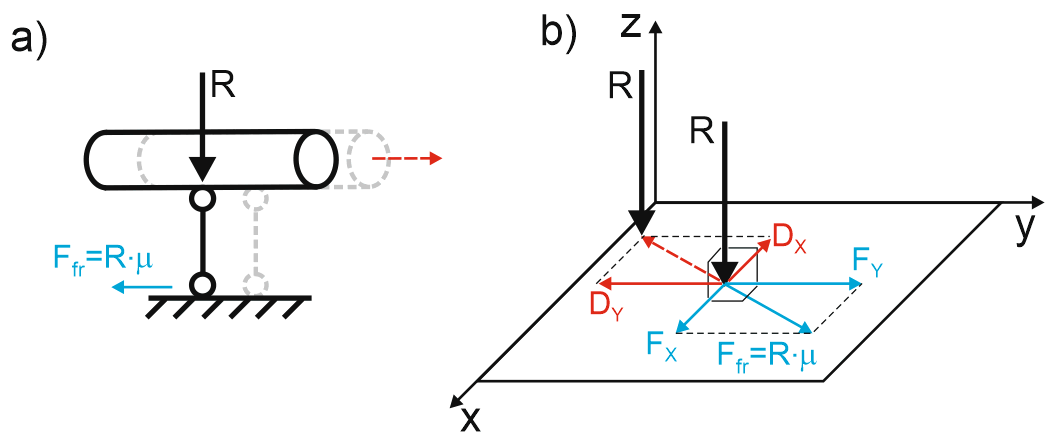
Read about START-PROF pipe stress analysis software
Friction factor must be in the range of μ=0.05÷0.75. If friction need not be considered, input μ=0. In this case, frictional restraint is not input.
Coefficient of friction µ depend upon the type of supporting surfaces (junction between Top of Steel and Bottom of Pipe or Bottom of Shoe/Cradle). Normally 0.3 is used if no special arrangement is made.
Carbon Steel to Carbon Steel: from µ=0.2 (new) to µ=0.75 (strong corrosion), recommended µ=0.3
Polished Stainless Steel to Polished Stainless Steel: µ=0.15
Graphite on Steel: µ=0.1
Carbon Steel on Concrete: µ=0.57-0.7
Pipe on Sand Soil (pipe laying on the sand): µ=0.4
Carbon Steel on PTFE: µ=0.2
Polished Stainless Steel on PTFE: µ=0.1
PTFE on PTFE: µ=0.1-0.15
Steel on Ice: µ=0.05
Pipe on Roll Support or Ball support: µ=0.05
Friction factor shall be applied at all vertical restraints.
There is various philosophy regarding the use of friction factor for guide and horizontal restraints. Some companies prefer not to use any frictional coefficient for horizontal restraints. However if used the same can be taken from the above list.
The friction force at the pipe support has a significant effect on the behavior of a piping system. Without friction effect may be meaningless in some cases, especially for the long transmission pipelines because friction force balancing against temperature expansion force. Also friction is very important for piping connected to the rotating equipment. The rotating equipment is notorious for its low allowable piping loads. Sometimes the friction at one support may can completely change the acceptability of the piping system.
The sliding surface is perpendicular to a restraint direction. Restraints with a friction are nonlinear.
There are 3 main hypothesis used for friction forces:
Friction force is a product of the restraint normal force and the coefficient of friction Ffr=R·µ
If the perpendicular force acting on the restraint is less than friction force (Fx^2+Fy^2)^0.5<Ffr, then pipe will be stopped Dx=0, Dy=0
If the perpendicular force acting on the restraint is equal to a friction force (Fx^2+Fy^2)^0.5=Ffr, then pipe will move
When pipe moving the friction force vector will be always parallel to a displacement vector and opposite direction Fx/Dx=Fy/Dy, where Dx, Dy - displacement vector, Fx, Fy - friction force vector

Friction restraints
During piping vibration the friction usually disappear, therefore it is recommended to use friction multiplier in operation mode editor of 0 or 0.5 may for wind, seismic, water hammer, slug flow, relief valve thrust, and other dynamic loads.
The friction forces appear while pipe is moving from installation mode to operating mode (see piping modes). When piping is cooling down it moves from operating mode to a cold mode, the friction forces turns into opposite direction. Therefore the anchor reaction turn it's direction in a cold mode too. This effect is especially important for a buried pipelines, where the friction forces are huge.

a - Friction forces direction while piping is heating up (installation mode to operating mode)
b - Friction forces direction while piping is cooling down (operating mode to cold mode)